All the Answers
Well-known member
Shopping tours to Chile: what were the five products most purchased by Argentines on the XXL weekend - Infobae

Source:

Tours de compras a Chile: cuáles fueron los cinco productos más comprados por los argentinos en el fin de semana XXL
Cerca de 20.000 personas cruzaron al país trasandino para aprovechar los precios. Las diferencias de los artículos más elegidos
April 04, 2024
Nearly 20,000 people crossed into the trans-Andean country to take advantage of the prices. The differences of the most chosen items
By Mariano Zalazar
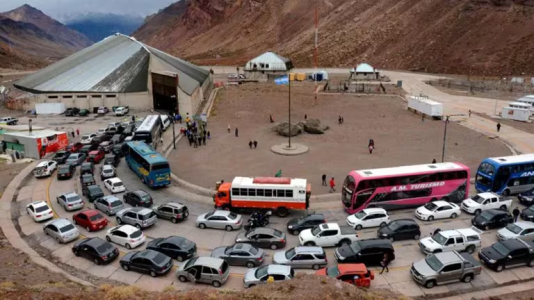
Entering Argentine Customs arriving from Chile.
In recent days, the enormous number of Argentines who crossed the border to reach Chile was in the news. Nearly 20,000 people passed through the Cristo Redentor Pass and several thousand more crossed to trans-Andean lands through other border crossings. But the motivation this time was not the Chilean beaches, but its prices.
According to Argentine tourists who visited Chile during the long weekend, there are products with prices similar to those found in Argentina, but there are also others much cheaper, even half the price.
What are those products? Most of them are items in the technology sector , but there are also items in clothing , footwear and automotive parts , among others.
Below is a review of some products that serve as examples in each category.
Notebooks
According to the official financial pages of Chile, in that country one dollar is currently equivalent to 980 Chilean pesos. Therefore, a product worth, for example, 20,000 Chilean pesos, has a price of USD 20.40, which is equivalent to 28,734 Argentine pesos, taking into account the exchange rate of the card dollar ($1,408).
Having made that clarification, it is time to move on to the price comparison of the products that Argentines bought the most during the weekend. The online values exhibited by companies such as Falabella, Musimundo and Ripley, among others, were taken as a reference.
There are many examples of notebooks, such as the MacBook Air 13″ M1 Chip 8-core CPU 7-core GPU 256GB Silver . In Chile, this model has a value of 699,990 Chilean pesos, which is equivalent to USD 714 and 1,005,699 Argentine pesos.
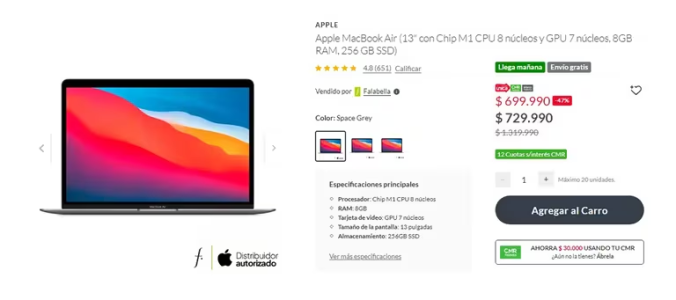
That same product, in Argentina, has a value of $1,949,900, that is, it is $944,201 more expensive than in the neighboring country.
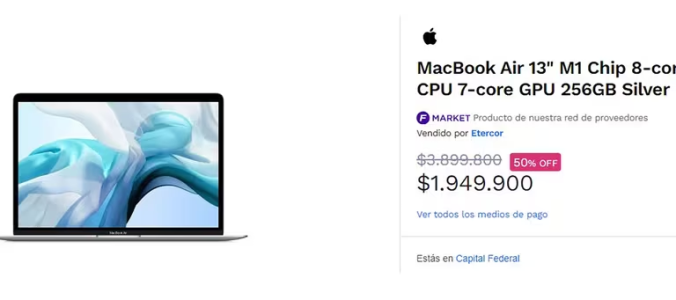
Cell phones
There is also a difference with cell phones. The Samsung Galaxy S23 FE 128GB , for example, can be found in Chile at a value of 599,990 Chilean pesos, which, when converted, is equivalent to 862,000 Argentine pesos.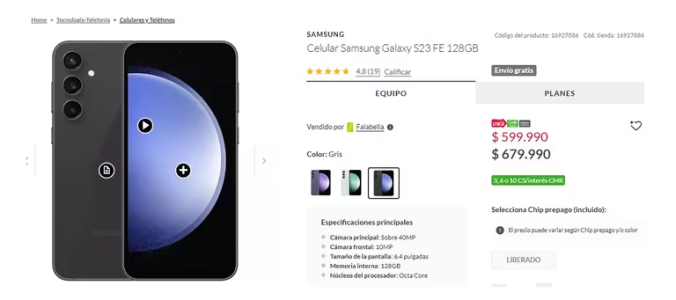
Within our country, the same equipment can be found at $1,164,999 ($302,999 more expensive), although it is also offered at a promotional value of $931,999 in a single payment.
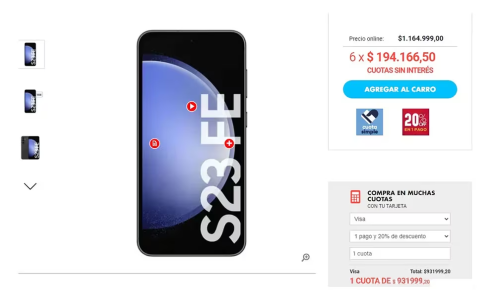
Consoles
In video game consoles the differences are greater. A Playstation 5 Slim Digital Edition with 1TB of storage costs 489,990 Chilean pesos. That value is equivalent to USD 499 and 703,985 Argentine pesos.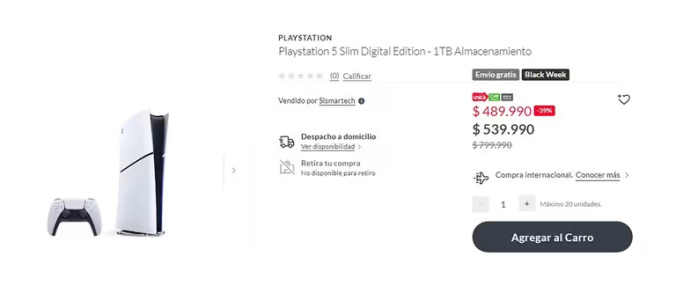
In Argentina, the same equipment has a price to the final consumer of $1,200,000, from which it follows that there is a difference of $496,015.

Tires
Outside of the technology sector you can find many products with large price gaps. Without going any further, this weekend thousands of Argentines crossed to Los Andes (the closest Chilean town) to change tires and begin the return trip.A Bridgestone Turanza ER300 205/55R16 tire has a price in Chile of 93,354 Chilean pesos, which, when converted, is equivalent to 133,362 Argentine pesos.
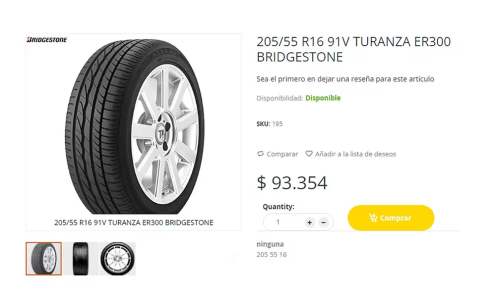
That same tire, in specialized stores on this side of the mountain range, has a value of $211,239, that is, $77,877 more expensive than in Chile . For the four tires, the difference then amounts to $311,508.
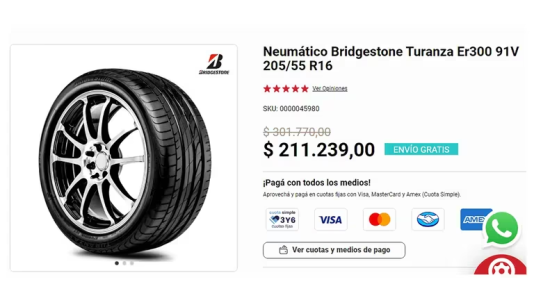
Zapatillas
In branded footwear, Chile is also cheaper. The Adidas Response 3.0 sneakers, for example, are sold in the brand's official store for 62,990 Chilean pesos, which corresponds to $90,499 in Argentine currency.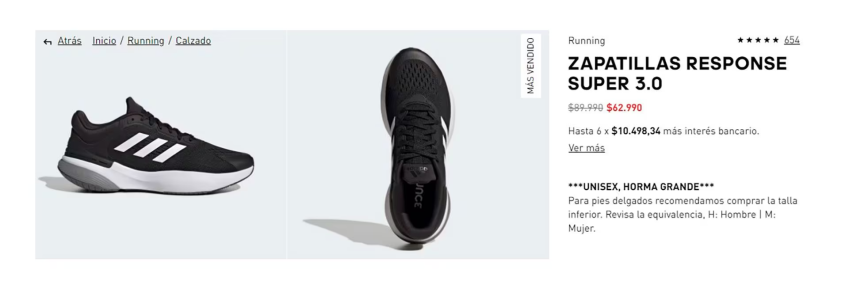
In the official store for Argentina, the same pair of sneakers, in the same color, has a final price of $125,999 ($35,500 more expensive).
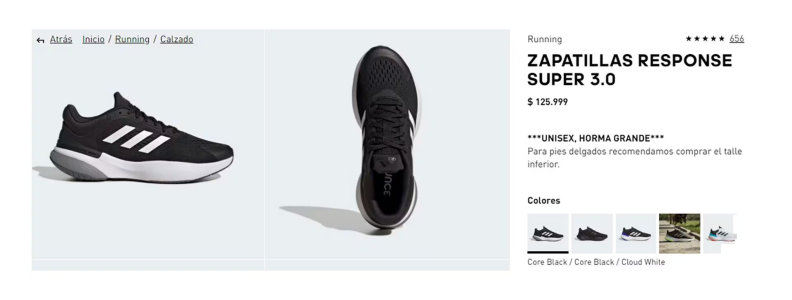
In all cases, it is worth clarifying, even greater differences in favor can be achieved if instead of purchasing with a debit card (the card is quoted in the dollar) Chilean pesos are used in cash, although for this it is necessary to go to the informal exchange market.
The new economic scenario
For much of last year, border cities, such as Mendoza, Iguazú and Bariloche, were overwhelmed with foreign tourists who came to the country to do their shopping, even in supermarkets. Now the scenario is different and the panorama in relation to prices is completely different. What changed?What happens is that until a few months ago, even during the administration of Alberto Fernández , the official dollar was contained at a much lower value (close to $380) and along with it, the price of hundreds of mass consumption products . Foreigners, in turn, could make purchases in Argentina with an exchange rate equivalent to the tourist dollar, which clearly gave them a competitive advantage when paying.
“After the devaluation implemented by Javier Milei and the end of price control programs, market values skyrocketed and tourists no longer had the advantage of having a differential exchange rate. We not only have inflation in pesos, but also in dollars. That is why foreigners stopped doing their shopping tours, it is no longer convenient for them,” explained the economist and director of Evaluecón, José Vargas.
“In addition, many prices that were relatively contained last year rose very markedly. This is the case, for example, of fuels. Last year gasoline cost around $300 and today it is around $900. In Chile it is at $1,100 to $1,200, but it has not had a price evolution like there was in Argentina,” he indicated.
On the other side of the border, meanwhile, the dollar increased considerably. “The Chilean peso was close to $600 a year ago and now it is $980 per dollar. That is why Argentines see a lot of price advantage in electronics, footwear, clothing and others,” he noted.
In short, Argentina once again became an expensive country , both for its inhabitants and for visitors from neighboring countries. On the contrary, Argentines found it more convenient to go shopping outside the country, not because their currency is worth more (on the contrary, the peso was devalued), but because internal prices rose so much that they were no longer convenient. , while in Chile they became cheaper.

